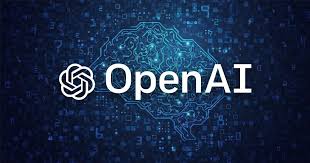In the fast-evolving world of artificial intelligence, protecting intellectual property is paramount for companies like OpenAI, which is at the forefront of developing groundbreaking technologies. This week, OpenAI filed a trademark application with the U.S. Patent and Trademark Office (USPTO) for its latest model, “OpenAI o1.” This move highlights OpenAI’s proactive approach to securing its innovations and the importance of IP protection in the competitive AI landscape.

What Is OpenAI o1?
OpenAI o1 is described as the company’s first “reasoning” model, a new category of AI designed to perform complex tasks while minimizing errors. Unlike traditional AI models that provide responses based solely on patterns in their training data, reasoning models like o1 spend additional time deliberating over queries to ensure accuracy. This self-fact-checking mechanism helps reduce common AI pitfalls, such as providing incorrect or misleading information.
The o1 model is expected to spearhead a series of reasoning-focused models, positioning OpenAI as a leader in developing tools capable of handling intricate and nuanced tasks. Given the transformative potential of this technology, it’s no surprise that OpenAI is keen to trademark its name.
Trademark Details and a Strategic International Filing
On Tuesday, November 21, 2023, OpenAI submitted its paperwork to the USPTO to trademark “OpenAI o1.” While the USPTO has not yet approved the application — it is currently awaiting assignment to an examining attorney — the filing underscores OpenAI’s determination to safeguard its innovations.
Interestingly, OpenAI had already filed a foreign trademark application for “OpenAI o1” in Jamaica back in May, months before the model was officially announced. This international filing reflects a growing trend among tech companies to file trademarks in jurisdictions with streamlined processes before submitting to the USPTO. By doing so, they establish an earlier filing date, which can be beneficial in potential disputes.
OpenAI’s Track Record With Trademarks
OpenAI’s trademark for o1 adds to a growing portfolio of applications as the company moves to protect its brand and technology. To date, OpenAI has filed approximately 30 trademark registrations, covering well-known products such as “ChatGPT,” “DALL-E,” “Sora,” and “GPT-4o.”
However, OpenAI’s trademark journey has not been without challenges. In February 2023, the USPTO rejected OpenAI’s application to trademark “GPT” on the grounds that the term was too generic. The USPTO noted that “GPT,” which stands for “Generative Pre-trained Transformer,” was already in use by other companies and contexts before OpenAI sought to claim exclusivity.
Despite this setback, OpenAI has largely avoided aggressive trademark enforcement. The one notable exception has been its ongoing legal dispute with technologist and entrepreneur Guy Ravine over the use of the term “Open AI.” Ravine claims he pitched the term as part of an “open-source AI” initiative in 2015 — the same year OpenAI was founded.
In a preliminary ruling this fall, a federal circuit court sided with OpenAI, granting an injunction that prevents Ravine from using the name while the case continues. The court determined that OpenAI was likely to prevail in its claim, citing its extensive use and recognition of the name in the years since its founding.
Why Is OpenAI Protecting “o1” Now?
Filing for the “OpenAI o1” trademark is a strategic move that reflects the growing importance of IP protection in the AI sector. OpenAI’s competitors are also racing to develop advanced AI systems, and safeguarding its model names ensures that OpenAI retains control over its branding and prevents misuse by others.
The filing also signals OpenAI’s intent to build a recognizable ecosystem around its reasoning models. By establishing a trademark early, OpenAI can solidify the identity of its o1 model and its successors, ensuring consistency and trust among its users.
The Broader Implications of AI Trademarks
The trademark battle over “GPT” and the proactive filing for “OpenAI o1” shed light on broader issues in the AI industry. As AI technology becomes more mainstream, terms and concepts once considered technical jargon are now entering everyday language. This creates unique challenges for companies seeking to protect their innovations while navigating legal hurdles related to generic terms.
OpenAI’s experience underscores the delicate balance between protecting proprietary technology and contributing to an open, collaborative AI ecosystem. While OpenAI’s mission includes advancing AI in a way that benefits humanity, its trademark strategy reflects the practical need to safeguard its commercial interests.
What’s Next for OpenAI o1?
As OpenAI awaits the USPTO’s decision on the “OpenAI o1” trademark, the model itself is poised to make waves in the AI industry. With its reasoning capabilities and self-fact-checking features, o1 represents a significant step forward in AI’s evolution.
For now, the trademark application serves as a marker of OpenAI’s commitment to innovation and its determination to remain a leader in the rapidly evolving field of artificial intelligence. Whether or not the USPTO grants the trademark, it’s clear that OpenAI is laying the groundwork for a future shaped by advanced reasoning models like o1.
Have thoughts on OpenAI’s new trademark application or the potential of reasoning models? Share your views in the comments below

Leave a Reply